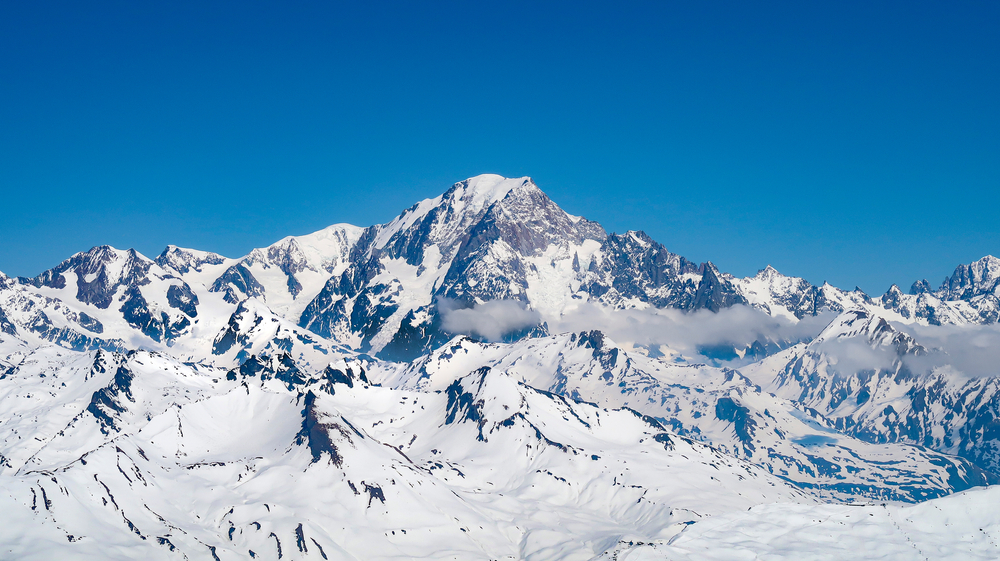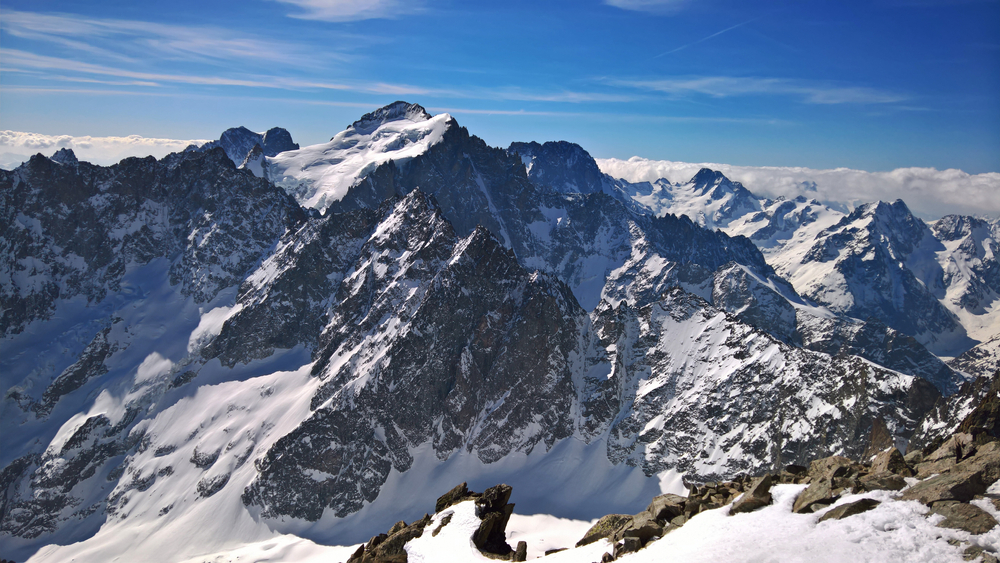Geography: Mountains
France's diverse landscape is renowned for its rugged mountain ranges, which have left an indelible mark on the nation's culture, history, and identity. Among these peaks, some serve as vital water sources, acting as the headwaters for rivers that sustain downstream communities, agriculture, and livelihoods. Throughout France's history, mountains have played pivotal roles as natural fortresses, offering strategic advantages and protection to civilizations and kingdoms that sought dominion over the region. Towering summits have influenced trade routes and shaped patterns of human migration, while also becoming symbols of strength, endurance, and resilience within French folklore, literature, and art.
The table below includes information on France's most prominent mountains.
|
Highest Peaks |
Elevation |
Mountain Range |
Type of Range |
|
Mont Blanc |
4,805.59 m (15,766.4 ft) |
Graian Alps |
Fold |
|
Barre des Ecrins |
4,102 m (13,458 ft |
Dauphiné Alps |
Fold |
|
Grande Casse |
3,855 m (12,648 ft) |
Graian Alps |
Fold |
|
Mont Pourri |
3,779 m (12,398 ft) |
Graian Alps |
Fold |
|
Dent Parrachee |
3,697 m (12,129 ft) |
Graian Alps |
Fold |
|
Aiguilles d'Arves |
3,514 m (11,529 ft) |
Dauphiné Alps |
Fold |
|
Aiguille de Scolette |
3,506 m (11,503 ft) |
Cottian Alps |
Fold |
|
Pic Bayle |
3,465 m (11,368 ft) |
Dauphiné Alps |
Fold |
|
Pic de Rochebrune |
3,320 m (10,890 ft) |
Cottian Alps |
Fold |
|
Vignemale |
3,298 m (10,820 ft) |
The Pyrenees |
Fold |
Copyright © 1993—2024 World Trade Press. All rights reserved.

 France
France 
